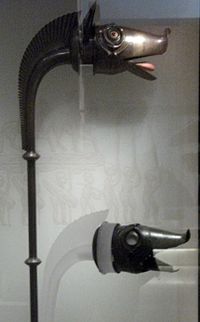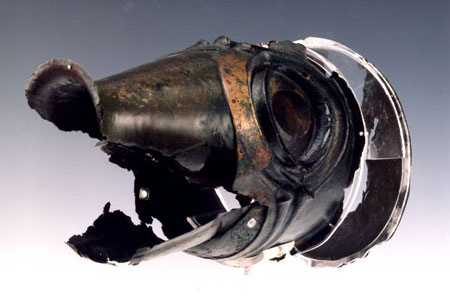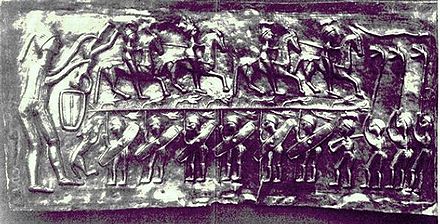Iconic Celtic Iron-Age trumpet returns to North East Scotland
The Deskford Carnyx was found at a farm in Deskford, Banffshire, (Scottish Gaelic: Deasgard, Siorrachd Bhanbh) in the North East of Scotland in 1816. The Celtic Iron-Age trumpet dates from between 80-200AD. Now the Carnyx will be shown at The Treasures of Historic Banffshire exhibition which opens to the public on Saturday 29th October at Duff House in Banff (Scottish Gaelic: Banbh) and will run until the end of February 2017.
Only the boar's head of the Deskford Carnyx now survives. The Celts were very skilled as metal workers and farmers, as well as being celebrated warriors. The wild boar was admired for its fierceness in defence. As well as being used for ceremonial purposes the Carnyx was used to unnerve opponents by its volume and the type of noise it emitted. The joined section at the jaws also moved when trumpeted in order to further frighten the enemy. Held high over the heads of those in battle it could be heard clearly by all.
The Treasures of Historic Banffshire exhibition is being held in partnership with Aberdeenshire Council, Historic Environment Scotland and National Museums Scotland. The Duff House exhibition will also feature the Gaulcross Hoard of Pictish silver jewellery, discovered in the 1830s in Fordyce, a small village around seven miles from the coast at Portsoy (Scottish Gaelic: Port Saoidh). On show as well will be a life-size replica of the Gundestrup cauldron, one of the most important finds from Iron Age Europe which was discovered in Denmark in the 19th century. The original dates from between 150 BC and AD 1 and has scenes that relate to Celtic mythology and on which three Carnyx players are depicted.



- Douglas MacQueen's blog
- Log in to post comments





